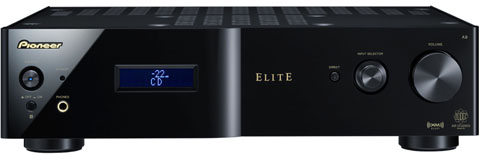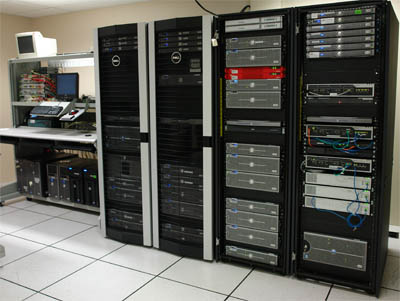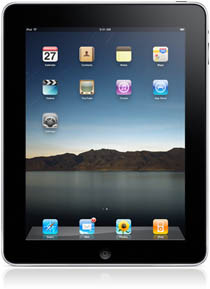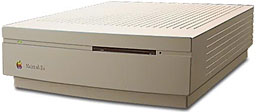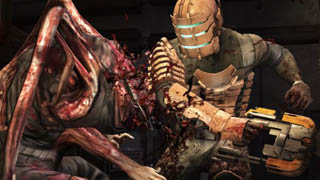
| Look What Followed Me Home - Dec 19, 2010 | ||||
I say hastily because I didn't bother doing my research and got the wrong model. I've since ordered the correct model off of eBay, but I had to go back to the store to exchange the other one. I figured maybe I'd get a new receiver so that I'd finally be able to listen to movies in DTS-HD sound which my current receiver doesn't support. However while I was there I saw a couple of audio components which were on sale and just to good to pass up. As a result I walked out of the store with a Pioneer SACD player and stereo receiver. SAC-what you ask? SACD is a music format popular with the audiophile market. I've always considered myself more of a visual person, but lately I've started to get back into listening to music again. I've even begun to really like Jazz lately. Ya, I've come a long way from my punk days... Sadly it seems that people have become accepting of crap quality over the past few years. Any audiophile considers things like MP3 players and iPod's as sonic abominations. And really, unless you are exposed to what music really should sound like, most people are clueless about what they are missing. The cool thing about SACD is that the music is uncompressed - until the advent of Blu-ray sound formats it was technically the best. Some would argue that it still is the best as music is really meant to be listened to in stereo only and not in surround sound (for that matter audiophiles argue music should be listened through discrete analog outputs and not digital). Of course to play these discs you need a special player - regular CD/DVD players can't decode the audio stream. Unfortunately due to its specialized status SACD players are hard to come by and the ones that are still being made are extremely expensive. That's why I couldn't resist the deal that was before me. For the price of a typical high end player they also threw in the stereo receiver. This is a box that is designed to take the analog signal and send it in it's purest form to a pair of speakers - and nothing else. No video scaling, no sound zones, no HDMI output etc. It does however come with an XM radio connector which I will make use of. And because they are part of Pioneer's Elite line, they are superbly engineered and built. So I'm in musical heaven right now. The downside to all this is that it looks like when I finally get the media room done that I'll end up with one set of speakers dedicated to music and one set dedicated to movies. But what can you do?
|
| Wireless Woes - Nov 26, 2010 | ||
Essentially all wireless routers work on a number of different channels - from 1 to 11 - with most being set at a default of 6. Each channel operates at a separate frequency of the wireless spectrum. Two routers operating on the same frequency will interfere with each other and slow down the connection. People get a wireless router, plug it in, leave it at the default and are generally happy. Then more and more people in their neighborhood get routers as well, also leaving them at the default and suddenly your internet browsing isn't as snappy. So then they upgrade to a faster standard (802.11n) router and things are again fine - for awhile. Because before long everyone else in their neighborhood does the same and you're back to the same performance issues. So the simplest solution is to change the channel. But to what? What is everyone else in your area using? I did some digging and came up with a terrific diagnostic tool. It will scan all wireless signals for both 2.4Ghz (802.11g) and 5 Ghz (802.11n) ranges and retrieve a whole bunch of info - but most importantly what channel everyone is using. Below is an actual screenshot of what I found. As you can see, most are left on the default, mine is set to use channel 7 and no one else is using it.
The application is called inSSIDer and can be found here. Note: you need to run this on a computer that is operating wirelessly and is not plugged directly in to your router. |
| Racktastic - Sep 15, 2010 | ||
 The past few weekends I've been busy busting my ass at work installing new server racks. In the span of a couple of years I've transformed our server room from rows of individual boxes sitting on shelving units to just a few racks containing up to 32 servers each. In addition I've managed to eliminate dozens of computers by converting them to virtual machines running on a highly redundant virtual cluster. This has allowed us to grow as a company without requiring the construction of a new server room. The last two racks I installed came with integrated cooling systems and at some point we'll have all the racks with self contained cooling. And there's still a couple of the old style computer bays to replace. So while I'm done for now the process is never ending. I easily moved over a tonne of equipment into those new cabinets and cut up my hands, bruised my arms and legs, and swore a lot in the process. All in all I'm quite proud of the work I've done.
|
| Nice Bra - Aug 25, 2010 | ||
 While I love my car, sometimes I wish I had bought a beater instead. It's expensive trying to keep it looking new. When I took it in the dealership to get fixed after my little mishap I complained about all the rock chips on the bumper and hood. I had done a bunch of Googling and the Pontiac G8 forums were full of people complaining about paint issues with their vehicles. Apparently in a bid to be more environmentally friendly everyone is moving to water based paints. According to these forums this results in an inferior product. However I've also found info that states that the new paint is actually much better. Who knows. I do know that in the relatively short amount of time I've had my G8 it's managed to accumulate way more chips than my Grand Am has which I've had for over a decade. I tried bitching to the dealership but they just said it wasn't covered under warranty. Instead they convinced me to shell out even more money to get a so called 'clear bra' put on. Essentially this is a see through rubberized coating which is supposed to prevent rocks from chipping the paint. 3M came up with this product first, but now there are several different companies offering it. The one my dealership put on is called Durashield.
Unlike normal 'bras' this one fades at the same rate the paint does so you don't end up with a color mismatch as time goes by. And you also wash the car and polish it just like you would normally. Was it cheap? No. But considering the alternative of painting the car every few years I'll try this route. See ya on the road! |
| Amiga 2000 Upgrade - Aug 2, 2010 |
 I'm awash in geek satisfaction right now. I've spent countless hours upgrading my Amiga 2000. After a number of setbacks I've finally managed to get OS 3.5 installed on it. Unlike upgrading my Macs or even my NeXT systems, with the Amiga I pretty much had to start from scratch and relearn an operating system I haven't used in almost 25 years. And unlike the newer OS's, a lot of the commands and operations are run from the command line. Thankfully there is still an active Amiga community and a number of forums dispensing priceless tricks and tips. The process to get all this accomplished was as follows: I booted off the OS 3.1 install floppy, formatted the hard drive, and then installed OS 3.1 onto it. Next up was to install the accelerator card which consisted of a 68040 running at 40mhz. After that was done I put in the video card, a Piccasso II, got it configured and outputting video on my LCD monitor. From there I installed the CD drive, finally found a CD file system that worked and was able to get it to recognize my OS 3.5 CD. Once that was installed I put in the network card, set it to grab the IP settings using DHCP, and connected it to my Apple router. Amazingly it worked without me having to do to much configuring. I fired up the built in Aweb browser and I was surfing the Internet! Besides the sheer coolness of being on the Internet with this ancient machine I'm now able to download and install software with ease. Previously I had to download archived files onto my PC, copy them to a 720k formatted floppy, insert the floppy into the Amiga and then unarchive it. Anything that didn't fit on a DOS floppy could not be installed. While I'm super happy with what I've accomplished, my upgrade journey is still not complete. I have another accelerator card which is running a 68060 and I plan on using it and installing OS 3.9 which I just ordered. This is the last OS ever made for the 68k Amiga. Having a 68060 based Amiga running OS 3.9 has long been my holy grail of computing. The '060 was the most advanced and final CISC processor made by Motorola. In mainstream computing it was only ever used in significant numbers on Amiga accelerators, with other vendors having chosen PowerPC (Mac) or Pentium (PC) chips instead. |
| The Evolution of the PVR- Jul 25, 2010 |
 In the past few months we've had no end of headaches with our Shaw PVR. In the past few months we've had no end of headaches with our Shaw PVR.Scrolling through the guide was slow, you'd press a button and nothing would happen so you'd press it a few more times and then suddenly it would go through each button press in quick succession, trying to order PPV events was a painfully (greater than 5 minutes) slow experience, and the sound would randomly cut out when watching recorded shows. So one day I was surfing and discovered that Motorola had just announced a brand new model that according to the forums solved all those annoying issues. I called Shaw up and asked when they were going to get it because their current offering was a piece of crap. To my surprise the person I was speaking with told me they went on sale in approximately a week. The day they became available I rushed down to the Shaw building, plunked down the credit card, and became the owner of a brand new model DCX3400. The cost was $400 and no, they didn't take trade ins of current models. So what's the difference? Well for starters it comes with a 500GB hard drive (internally) which gives us four times as much storage. It has an upgraded sound chip which outputs in 7.1 surround for shows that offer it. It can output 1080p in addition to 1080i and 720p (even though currently nothing is broadcast at 1080p). It uses a more advanced CODEC for processing (MPEG-4 vs MPEG-2). And finally it does indeed solve the interface issues that was driving me crazy. Scrolling through the guide is now lightning fast. About the only thing I don't like about it is the styling. I prefer the look of the older 'silver' model. However, this one does tend to disappear into the background instead of standing out. If you have a Hi-Def TV and don't yet have a PVR there's never been a better time to buy one. Is it worth it if you have one of the older DCT6412 models? That would depend on how much you use it. If you've ever worried that you might run out of space while you're off on vacation and deleted shows like a crazy person to make room, then it's worth it just for the larger capacity. That and the added future proofing makes it a great choice. |
| iPad is iTastic!- Jul 1, 2010 |
 Way back when the iPhone 3GS came out I had a conversation with a friend who had one and thought it was the greatest thing since sliced bread. Way back when the iPhone 3GS came out I had a conversation with a friend who had one and thought it was the greatest thing since sliced bread.He wondered why I didn't want to get one. I told him it was because I already had a cell phone and because I thought trying to do anything on a screen that size was simply retarded. I knew the iPad which was only a rumour at that time would eventually be released and said that I was holding out for it. Fast forward two years and as soon as the iPad became available for preorder I ordered the top end model. On the day it became available in Canada it showed up at my door. It's important to note there are two different versions - the one which I have is WiFi (wireless) only. The other version is WiFi + 3G, which like the iPhone will operate anywhere via a cellular network. Having had time to play with it for just over a month I can easily say that for me this is the first computing device in the past 20 years to bring fun back to computing. It's the first device to invoke that feeling of wonder that I had when I was a kid learning about computers for the first time. So what makes it so great? For me it's the interface. This is truly the first new mainstream interface breakthrough since Xerox invented the Graphical User Interface (GUI) in 1975. I knew this interface was a game changer when I watched a young girl on a flight trying to 'flick' the screen on the headrest in front of her to change the shows she was watching and completely confused that it wasn't working. In addition to the interface, the iPad is computing at its simplest. In fact Chris is even more in love with it as she doesn't have to deal with the hassles of everyday computing which frustrates her greatly. It has become a fight between us as to who gets to use it. The third great thing is of course the apps. All the apps available for the iPhone are available for it in addition to a growing number of versions being optimized for the larger screen and features of the iPad. The fourth benefit is its size and weight. The thing is almost paper thin and compared to a typical laptop is significantly lighter. And as a final bonus it's faster than even the latest iPhone. Negatives? Despite having a coating which supposedly repels fingerprints the thing is a magnet for them. Thankfully when looking right at it you don't notice them and they are easily cleaned off with a cloth. It also appears that the iPad will lag the iPhone in OS upgrades by a few months. It's not scheduled to get the new iOS 4 until November. Overall I'm extremely happy with the device. Its great to have it in the living room and use it to quickly check my mail or look something up on the internet. I also intend on taking it with me when on the road instead of lugging a laptop around. We took it with us when we went up to Fort Mac and it was quite amusing watching the security guy not knowing what it was and whether or not he should treat it like a laptop or not. |
| Mac IIsi Upgrade - Jun 5, 2010 |
 Having finished upgrading my A1200 with a CF card I turned my attention to upgrading my Macintosh IIsi. Having finished upgrading my A1200 with a CF card I turned my attention to upgrading my Macintosh IIsi.The IIsi has always had a fond place in my heart. It was the first Mac I ever owned. While I enjoyed my Commodore machines, I remember being amazed at the time at how professional and polished my Mac seemed in comparison. However, this time I ran into no end of problems trying to get a CF card working. First I had to get the parts so I called up my buddy Artmix in Japan, who sold me the IDE to CF adapter and the IDE to SCSI adapter (yes you have to connect two separate adapters together). I then got the CF card off of eBay - a 2GB Sandisk. I connected everything together and formatted the card, but I just could not get through an entire install of OS 7.6 without it hanging at some point. It was extremely frustrating and I assumed there was a problem with the card itself (which are notoriously finicky) or with the formatting software. After a few days of pulling my hair out I realized what the issue was. Unlike now a days when all you have to do to install a hard drive is simply connect it to the Sata cable, with SCSI you have what's called a terminator. Basically it signals electrically where the SCSI chain starts and stops. Both ends have to be terminated in addition to ensuring no two devices have the same device ID. The second major problem I had was trying to get files onto the machine which only had a floppy drive. The first thing I needed to do was get Stuffit which is a compression program on there. The problem was that it always came 'stuffed' itself and was larger than would fit on a floppy (USB wasn't invented yet). I was caught in a vicious catch 22. Eventually I came upon the idea of installing the hard drive in my IIci which has a network card, using my Color Classic to grab files off the internet, and then connecting the two via an Appletalk network and transferring the files across. From that point on everything went smoothly. I installed my Daystar 68040 @ 40Mhz accelerator card, grabbed a bunch of files off the internet, and installed a few games. I now consider this system to be done and blessed. |
| Dead Space - May 20, 2010 | ||
 I just finished playing Dead Space. I just finished playing Dead Space.In this game you play an Engineer who's on a mining ship in space which gets overrun by mutant creatures. You work with a couple of computer controlled players to overcome various obstacles and hopefully finally get off the ship. At first I hated this game and didn't think I'd end up finishing it. Two main issues are that it uses an 'over the shoulder' view which I absolutely detest. Either make it a first person perspective, or isometric, or give the user the option of switching. The second issue is Electronic Arts did a typical crappy PC port. Reducing the mouse sensitivity doesn't help much for what is a really twitchy game - it's even a chore navigating the game menus. Despite that, after a few hours of playing I started to get into it and by the end was thoroughly enjoying things. While it wasn't as scary as F.E.A.R., the setups weren't as obvious as Doom 3 where you just knew there'd be a monster around every corner. Visually, while not on the same level as Half Life 2, it was fairly good. It also ran fine on my system which is no longer cutting edge. Weapons were kinda neat in that they represented items you might actually find on a mining ship - no rocket launchers to be found here. You also have a couple of special skills - the first one being Kinesis which allows you to move objects at a distance and the second one being Stasis which allows you to slow down time. These skills are utilized well and help to keep things interesting. The boss fights were challenging, but never frustrating and after a few tries I found I usually was able to get past them. I think there was only a couple times where I got stuck and had to turn to a walkthrough to figure out what to do. I would only recommend the PC version if you're willing to put up with it's few annoyances, but I imagine this game would be a blast on a Xbox or Playstation. This is Isaac Clarke, last survivor of the USG Ishimura signing off...
|
| Satan's Hollow - May 17, 2010 |
 I am now the proud owner of the cocktail edition of Satan's Hollow! I am now the proud owner of the cocktail edition of Satan's Hollow!My latest (and last) arcade game was dropped off a few hours ago. Thankfully they packaged and protected it well, unlike when my Tron showed up and I died a little inside when I saw that it had fallen on it's side in the truck. For those who've never played it, it's a relatively simple but immensely fun game. I remember plunking many quarters into it growing up. You fire at gargoyles which circle above you, dive bomb you, and try and capture your extra lives. While this is going on you're trying to build a bridge across a river of lava. When you complete the bridge you face off against Satan and upon killing him advance to the next level. Overall the game is in poor shape. The glass is scratched to shit, the top overlay is rippled, the cabinet scratched and torn up on the bottom, the caster legs are messed up, the coin door rusted, and the side overlays torn. However I knew the shape it was in when I bought it. It's next to impossible to find this game in great condition - even more so when it's the cocktail (sit down) version. For me the fun will be in restoring it. All my other games came in excellent condition, so this will be my first attempt at a restoration. I already have a new top overlay, new glass top, clips, and start buttons. Next up will be the replacement of the coin door and purchasing a new custom built cabinet. From there I'll either replace all the caps (Capacitors) on the monitor or perhaps just purchase one of the few remaining new ones still available (no one is manufacturing cathode ray tubes anymore). The one thing that I don't think I'll ever be able to fix is the control panel. All the repro artwork I've seen is for the standup version. The joystick is also very unique and I've yet to come across a replacement. Now excuse me, I'm off to battle the Dark Lord! |
| Old Meets New - May 8, 2010 |
 I have at least a dozen computer projects that I keep meaning to get to. I have at least a dozen computer projects that I keep meaning to get to.But by the time the weekend comes around I'm either busy with something or to tired from the work week to get motivated. However today I buckled down and decided that I would at least get one of my projects done. But what one? I thought about it for awhile and then decided I'd get on with upgrading my Amiga 1200. The upgrade consisted of replacing the stock hard drive with a Compact Flash (CF) drive and installing an Indivision FlickerFixer. With these old computers the number one thing that usually fails is the hard drive - let's face it, some of these drives are pushing 25 years. As a result, more and more enthusiasts are turning to CF drives as a solution. The benefit of them compared to traditional hard drives is that there are no moving parts, which means no wear and tear, no noise, and no heat. Amazingly, some companies are still making products for the classic Amigas. One such company is Indivision, based out of Germany. Their FlickerFixer product allows the use of modern LCD monitors with these systems. Amigas output video in a format which is incompatible with today's monitors. In the past, you either had to find an old school Multisync monitor to use, or spend a fortune buying an external Scandoubler dongle off of eBay (which don't work very well anyway). But this product is simply the best solution by far. Never having taken an A1200 apart before I had to do some Googling to find instructions on how to do so. It actually is relatively simple once you know how. I opened the case, removed the existing hard drive, floppy drive, and metal shielding. From there I installed the Indivision which snaps over the existing 'Lisa' video chip and routed the RGB cable out the back empty port. To do that though, I needed to get some tin snips and cut a hole in the shielding. Once that was done I installed the CF hard drive and used some velcro tape to secure it in place. I reassembled everything, turned it on, and.....nothing. I momentarily had a sick feeling that I might have forever ruined my mint condition A1200 with my mucking about. But I calmed myself, re-opened the case again and discovered that the FlickerFixer wasn't quite on properly (you really have to press down hard for it to snap into place). Having fixed that I put everything back together for a second time, fired it up, and....yay! Success! So my A1200 is now running off an 8GB CF card and outputting video to my Philips LCD monitor. I couldn't be happier. |
| Back In My Day - Apr 7, 2010 |
  I thought this was pretty cool. I thought this was pretty cool.Apparently people are still playing the classic arcade games and still breaking world records in the process. From Wired Magazine: On Saturday, John McAllister sat down at a friend’s house near Portland, Oregon to play a game of Asteroids. By Monday, he was still playing. Anyone know what the world record for Ms. Pacman or Galaga is? I think I should go practice... |
| Meet Jipps - Feb 24, 2010 |
 So we finally fired up the GPS I bought Chris for Christmas. We used it this past weekend to plot the way to her MRI appointment. So we finally fired up the GPS I bought Chris for Christmas. We used it this past weekend to plot the way to her MRI appointment.Before spending the money I did a bunch of research and asked opinions from friends who had these devices. In the end I bought her the Garmin nuvi 1490T. The general consensus was that Garmin was superior in many ways to TomTom’s and this particular model got really great reviews. A few things that stood out was the larger screen, Bluetooth feature, and a pedestrian mode. The last one allows you to use the device for determining where you are when you're walking (or biking) somewhere. It would have been invaluable when we were in Europe last time as we got lost more than a few times. I was making mental notes while we drove and I really liked the real time 3D view of the roads. It was also neat that it showed you your speed, although honestly I'm a bit freaked out by the fact that a satellite in space can detect the slightest movement of the car. We also used it to look up the nearest Red Lobster when we went for dinner. All that said, the things are definitely a distraction. I found I had to force myself to stop looking at the screen while I was driving and learn to just glance at it instead. Chris changed the default voice to have a British accent. We were trying to think of a name for it and in the end decided on 'Jipps'. An in-depth review can be found here. |
| Brewtastic! - Jan 27, 2010 |
 A few weeks ago my Tassimo started having problems. A few weeks ago my Tassimo started having problems.It wouldn't completely empty the contents of the disc, it would sometimes switch to manual mode instead of automatic, and well, most importantly the coffee starting tasting like crap. After doing some research I found out that the problem was that the unit needed to be 'descaled', essentially cleaned. You are supposed to do this after so many weeks of use. Apparently there's a cleaning disc that comes with the unit that you put in which initiates a cleaning routine in the machine. Well I must have thrown it out when I unpacked it so many months ago. So I went on eBay, found someone selling these cleaning discs and ordered them (all the way from the UK). In the meantime as I got the shakes from not being able to make my coffee I justified to myself the purchase of Tassimo version 2. I first noticed these new versions months ago when we were at Home Outfitters. I got all excited when I saw them but Chris just gave me 'the look' and I forced myself to walk away. So now that I have one, what's different you ask? Well first off the new ones are made by Bosch (the old ones were made by Braun). They are much smaller, quieter, and come with a replaceable water filter. But best of all they actually tell you when they need to be cleaned - plus they have a spot in the back that holds the cleaning disc so you don't have to worry about ever losing it. A good overview of the new model can be found here. Now excuse me, I'm off to make a Chai Tea latte. |
| Left 4 Dead 2 - Jan 10, 2010 |
 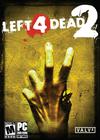 Chris got me this for Christmas and I just finished playing the Single Player campaign. Chris got me this for Christmas and I just finished playing the Single Player campaign.Overall I enjoyed it - I mean you just can't go wrong with killing zombies. I haven't played the original so I can't comment on how it's different although all the reviews seem to agree it's much improved. For me there wasn't much strategy involved other than not to get to far ahead of my computer controlled players. Some things were fun such as setting up exploding canisters at likely attack paths and then blowing them up when a horde would run by. But for the most part you just mow everything down in front of you. Time to complete was fairly typical. I'd estimate that I spent roughly a week playing an hour or two a day. Technically the game is pretty good. It uses the same engine that's used in Half Life 2. Although unlike that game the physics model has been definitely dialed down. One of the things that delighted me about HL2 was just going around manipulating objects. Sadly in this one you can only interact with so many items. Still this game is about killing hordes of zombies, who has time to throw things into water to see how they realistically bob up and down? For the first half of the game I was totally engrossed in it, but after that I found gameplay to start to get repetitive and predictable. I played on the 'Normal' difficulty setting and generally found it to be balanced nicely. The end of each chapters were definitely 'white knuckle, screw my teammates, just get me the hell to the end point' fun. I only found the very final one (at the Bridge) to be exceedingly difficult. I tried multiple times without success before turning the difficulty down to 'Easy' in order to finish. Even then I barely made it. In summary, L4D2 is a good bit of Zombie slaughtering fun. A more in depth review can be found here. |
| Cube Upgrade - Jan 1, 2010 |
 Well I finished upgrading the video card in my Mac Cube. Well I finished upgrading the video card in my Mac Cube.While not hugely painful there was still a number of unexpected issues I had to overcome. The biggest surprise was despite the replacement card being the Mac Edition and the Cube being a supported platform the end bracket was completely wrong. So I had to end up doing some bracket surgery by clipping off the parts that didn't fit and drill new holes so that the screws would align properly. Once that was done the hardest part was getting the damn thing back in again. After many attempts and a significant amount of swearing I was able to get it back in place. I fired it up, installed the latest driver that ATI offered for that model and everything is tickety boo. So I've now gone from the stock Rage 128 card to the 7500 Radeon card. Besides being generally faster overall it also has double the memory, to 32MB. Yes I know, that doesn't seem like much. The card I having in my gaming PC has 1GB of memory for instance. But keep in mind the age of the Cube. This is a significant upgrade for it. |

